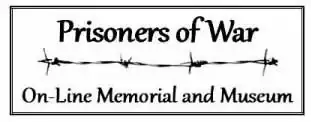Background to the WO416 collection (German POW capture cards)
Many of the POW listings on this site have been extracted from the UK National Archives transcriptions of the surviving Personalkartes (personal cards) and other cards for each man held under series WO 416: German Record cards of British and Commonwealth Prisoners of War and some Civilian Internees, Second World War. This data subsequently formed the basis of the UK National Archives catalogue for WO 416. It has further been enhanced by personal records/recollections of family and friends of the personnel involved.
The UK National Archives transcription process as at autumn 2022 is an ongoing project. Data is being tackled in surname order; see https://discovery.nationalarchives.gov.uk/details/r/C14541141
The data set used for this listing is that provided to us on [20/05/2021]. We anticipate starting the process of an update to this listing in early 2023. The UK National Archives usually releases data at the end of the year as a POW passes the 100th anniversary of his/her known birth date, the release of data appears to be planned to continue until 2028-9.
The data within the cards only reflects time spent by military personnel held in German military captivity. Military covers:
- Army personnel.
- Air Force personnel.
- Navy personnel.
- Merchant Navy personnel.
It should be noted that the list includes some ‘strays’ from the United States of America Military as well as other Allied Nations e.g. French, Dutch, Norwegian, Polish and others. This also includes:
- Persons classified as civilians during the data extraction during the UK National Archives transcription process.
We have excluded
- All military personnel where the UK National Archives transcriptions solely record their deaths and there is no evidence that they were initially held POW.
- –
It is evident that errors can be found across all data fields. Such errors can be categorised as
- Simple transcription errors.
- Errors in adding data taken from other sources when the data itself is not identifiable on the cards themselves.
- Lack of understanding by transcribers of both British and Commonwealth military organisational structure.
- Lack of understanding by transcribers of the German POW system including camp numbering, camp locations and organisational changes.
- Complete lack of understanding of Roman Numerals. (Gross errors easily recognisable to us have been worked through against other data sets available to us. We have introduced data corrections where they are appropriate but our corrections cannot be described as exhaustive. Further errors are there to be identified. Where we have been unable to locate data to alleviate our concerns we have indicated that the data of concern may be unsafe.
Readers should also recognise that the data written on the cards may not reflect what the reader’s knowledge of an individual POW is. Within this we would highlight
- Errors made by the POW himself in answering questions as the German clerk filled in his personalkarte soon after capture.
- The German clerk’s lack of understanding of what was said to him in a language and dialect unfamiliar to him.
- The German clerk’s need to fit what was told to him into the terminology that was used by the German military.
- Rank promotions after the date of capture.
Such errors will reverberate through the German record keeping system and maybe into records created by the UK War Office.
The UK National Archives data sets for each POW’s German Record Cards are:
- Date of Birth.
- Place of Birth
- Service
- Rank
- Regiment/Unit/Squadron
- Service Number
- Date of Capture
- Theatre of Capture
- Camp Name/Number
- POW number
- Date of Death
- Number of Photographs
- Number of Fingerprints
- Number of X-rays
- Number of Cards
“Service” is not recorded by the German clerks and is usually allocated in the UK National Archives transcription process with an error rate that has been a constant source of concern.
“Camp Name/Number”. Another cause for concern. The data set available to us was, in the main, “Camp Name/Number and Camp Location”. Camp locations, we decided to delete thus eliminating a need for a large scale check POW by POW of cards to ensure that organisational changes such as camp location were accurately reflected and compatible with the dates mentioned in the cards. Unrecognisable camp name/numbers have been investigated as previously described.
“Date of Death” We discarded this in the creation of this listing as the original data set was sparsely populated and much referred to the POWs later life. “Number of Photographs”, “Number of Fingerprints”, “Number of X-rays” and “Number of Cards” reflect what can be found when viewing the cards. They have been discarded in the creation of this listing.
In regards to the air force POWS the primary data is taken from the WO 416 lists and cross referenced to http://www.rafcommands.com/. Their records have been compiled from AIR 20/2336 records file held at the UK National Archives. Subsequently the data was enriched from information in AIR 81 and WO 392; both also at the UK National Archives.
Australian forces data has been cross checked with the National Archives of Australia https://www.naa.gov.au/, Department of Veteran Affairs https://nominal-rolls.dva.gov.au/ and Prisoner of War Memorial Ballarat https://www.powmemorialballarat.com.au/.
New Zealand forces data has been cross checked with the Auckland Museum Online Cenotaph https://www.aucklandmuseum.com/war-memorial/online-cenotaph/popular-searches/pow

Leave a Reply
Want to join the discussion?Feel free to contribute!